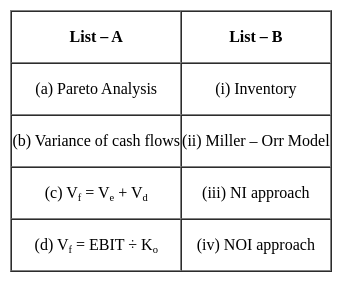MH SET Paper 2 Mock Test - 1 (Commerce) - MAHA TET MCQ
30 Questions MCQ Test - MH SET Paper 2 Mock Test - 1 (Commerce)
Which demographic group is less likely to use digital transactions due to limited digital literacy?
Which of these apps is not associated with digital payments in India?
| 1 Crore+ students have signed up on EduRev. Have you? Download the App |
What event in recent Indian history acted as a catalyst for the sudden increase in digital transactions?
Which of the following economies accrue all the firm in an industry?
Which of the following is incorrect about proactive planning?
What is the rate of the consumer price inflation for the first half of the current fiscal year?
What is the minimum amount of the securities purchases through GSAP in the first quarter of the current fiscal year?
What is the rate of GDP growth that is predicted for FY22?
Which Act was replaced with the introduction of Competition Act, 2002?
Given below are two statements, one labelled as Assertion (A) and the other labelled as Reason (R).
Assertion (A): Prepaid expenses are not considered as liquid assets.
Reason (R): Prepaid expenses cannot be converted into cash.
In the context of the above statements, which one of the following is correct?
Direction: The following questions consist of two statements, one labelled as Assertion and the other Reason. Examine both the statements carefully and mark the correct choice according to the instructions given below.
Assertion (A): H. R. managers perform both line and staff functions.
Reason (R): H. R. managers advise the line managers in the decision-making process of an orgnisation.
In which year Accounting Standards Board was established in India?
‘No ideas are ever criticized’ and ‘the more radical the ideas are the better’ – are the rules of which decision making process ?
Direction: For the Assertion (A) and Reason (R) given below, choose the correct alternative.
Assertion (A): International business has grown in more recent years at a faster pace than global production.
Reason (R): Growth through trade has increased, but growth through foreign direct investment has not.
The basic objective of export Promotion Council is to promote and develop-
Which of the following buying process sequence is correct ?
1. Adoption
2. Legitimization
3. Attitude
4. Awareness
According to D. Katz, morale has four dimensions
(i) job satisfaction
(ii) satisfaction with wages and promotional opportunities
(iii) identification with company
(iv) pride in the workgroup
(v) top management support
Select the correct combination.
Which of the following is the function of Multilateral Investment Guarantee Agency (MIGA)






















